
Despite all the wonderful weather of the last week, most nights have not been good for astronomy. The cloud rolling in after the Sun goes down, being the usual culprit.
Tonight was different. Perfect conditions. No wind, excellent transparency and very stable seeing.
At this time of year, bagging those objects in Sagittarius is at the very top of of my list. The only problem is that it’s rising behind four trees. Apart from a couple of objects that were obscured, the rest were observed in the gaps between, or as they rose above the tops. No Moon around to cause problems either.
Session Data
- Date: 8/06/2013
- Time: 23:00 – 01:09 UT
- Temp: 11.6c,
- Air Pressure: 1011Mb,
- Humidity: 82%,
- Dew point: 8.5c,
- Wind Speed: 3.0 MPH .
- Seeing: I Perfectly Stable,
- Transparency: Extremely Clear.
M57

We only had a quick looks at this – just to check the pointing accuracy after Cold Boot of the Mount. Best views were made in the Altair Astro 250mm, Delos 14mm, 145 X, 29.8′ with and without the Broadband nebula filter. Tried to see the central star in Altair Astro 250mm, Delos 10mm., 203 X, 21.3′ but saw nothing.
M20
In the Altair Astro 250mm, UWA 18mm, 113 X, 43.6′ and centering the bright star ID/s: ASCC1593279 you are immediately struck by what looks like a typical 1950’s UFO flying saucer. With North at the 4 o’clock there are six bright stars running below centre, running left to right, the end stars are ID/s: ASCC1593341 and ID/s: ASCC1593301. This forms the flat plate of our UFO. The domed top is made up of a grouping of stars surrounding ASCC1593279 in which nebulosity is embedded.
Changing to the Altair Astro 250mm, Delos 14mm, 145 X, 29.8′ the Dome stars form a ‘W’ shape. The nebulosity seems to run a short distance from here in an 8 o’clock direction.
M23
Can only get all this to fit in using Altair Astro 250mm, Plossl 40mm, 51 X, 50.8′ Brightest star in field at 8 O’Clock is ID/s:SAO160909.
Object is very open and looks extremely random. Unable to sense any kind of shape so no Star Trek objects visible in this one 🙂
M28
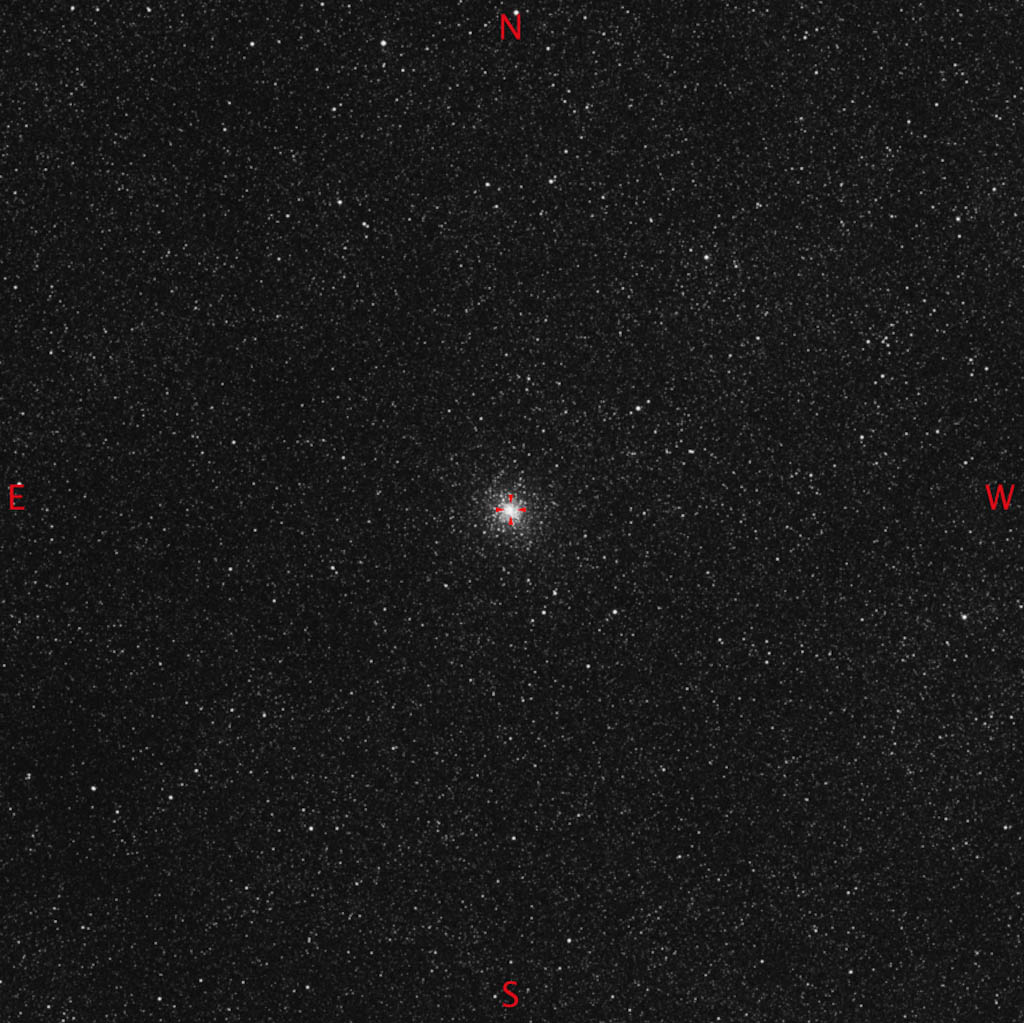
With Altair Astro 250mm, Delos 10mm., 203 X, 21.3′ and north at the 10:30 position. Two prominent stars towards the edge of the FOV ID/s: GSC6848-02970 at the 6 O’Clock and ID/s: GSC6848-00680 at the 9 o’clock. The Globular cluster is small but does not appear circular – being offset to the 9 o’clock. Looks like a Packman with the wide open mouth at the 3 o’clock. The bright core is surrounded by a ring of nebulosity which when viewed with averted vision, then resolves into hundreds of very faint 14.0th mag stars.
M22
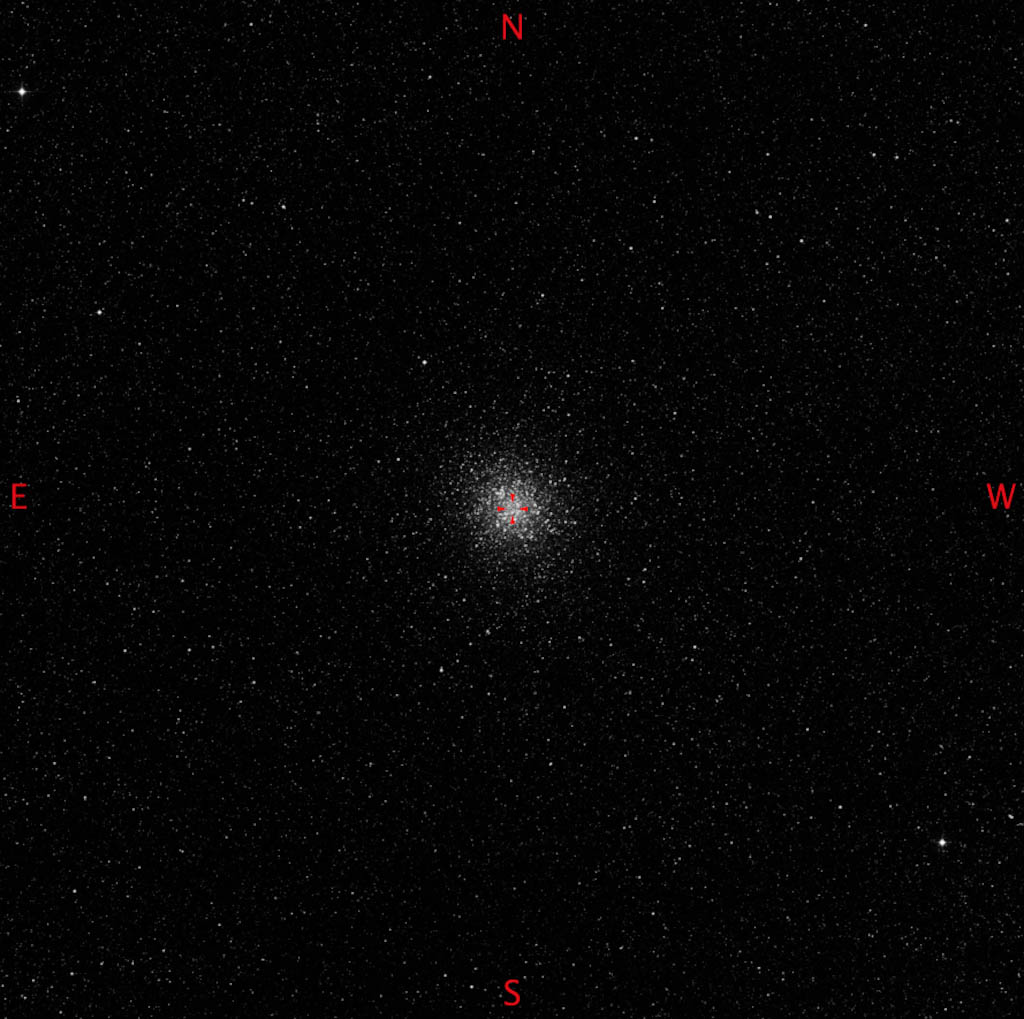
With North at the 10:30 o’clock in the Altair Astro 250mm, Delos 14mm, 145 X, 29.8′, this looks huge when compared with M28. Looks to fill about 25% of the eyepiece . The shape is oval with the longest dimension vertical in the eyepiece and the width to be a little over 60% of it’s length. Really wierd!!! With the Altair Astro 250mm, Delos 10mm., 203 X, 21.3′ the Cluster now looks circular and takes on the look of a reverse donut shape. The ring on the donut has a darker background with fewer stars than the area outside of this, being more populated. The core is unresolved and condensed.
M71
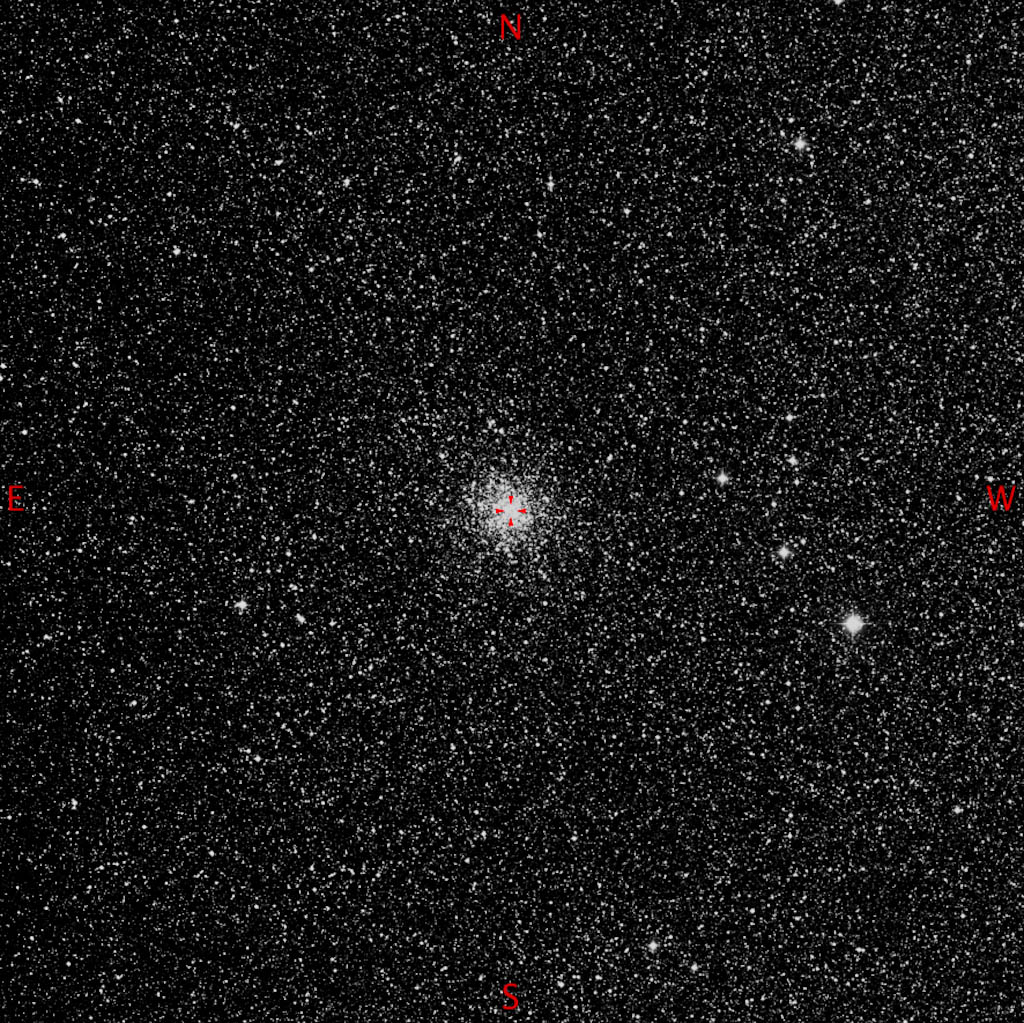
In the Altair Astro 250mm, Plossl 40mm, 51 X, 50.8′ the Cluster looks V shaped, with the point, pointing down to the 6 o’clock. North is at the 4 o’clock.
Switching between the Altair Astro 250mm, Plossl 40mm, 51 X, 50.8′ and the Altair Astro 250mm, Delos 14mm, 145 X, 29.8′, the background in the former looks a lot lighter. Switching to the Altair Astro 250mm, Delos 10mm., 203 X, 21.3′ the shape starts to take on the look of India. Half way down is waisted and narrows rapidly towards the point. At the top of this triangular shaped ‘India’ there is a curve of stars forming a bowl and between this and the rest triangular shape to the 6 o’clock, is a void. Going back to the Altair Astro 250mm, Plossl 40mm, 51 X, 50.8′ at the 2 o’clock from the M71, are a group of three brightish stars and another similar number at the 7 0’clock. This second grouping of stars has a tail that curves parallel to the outer edge of the FOV and continues around to the 11:30 o’clock.
M80
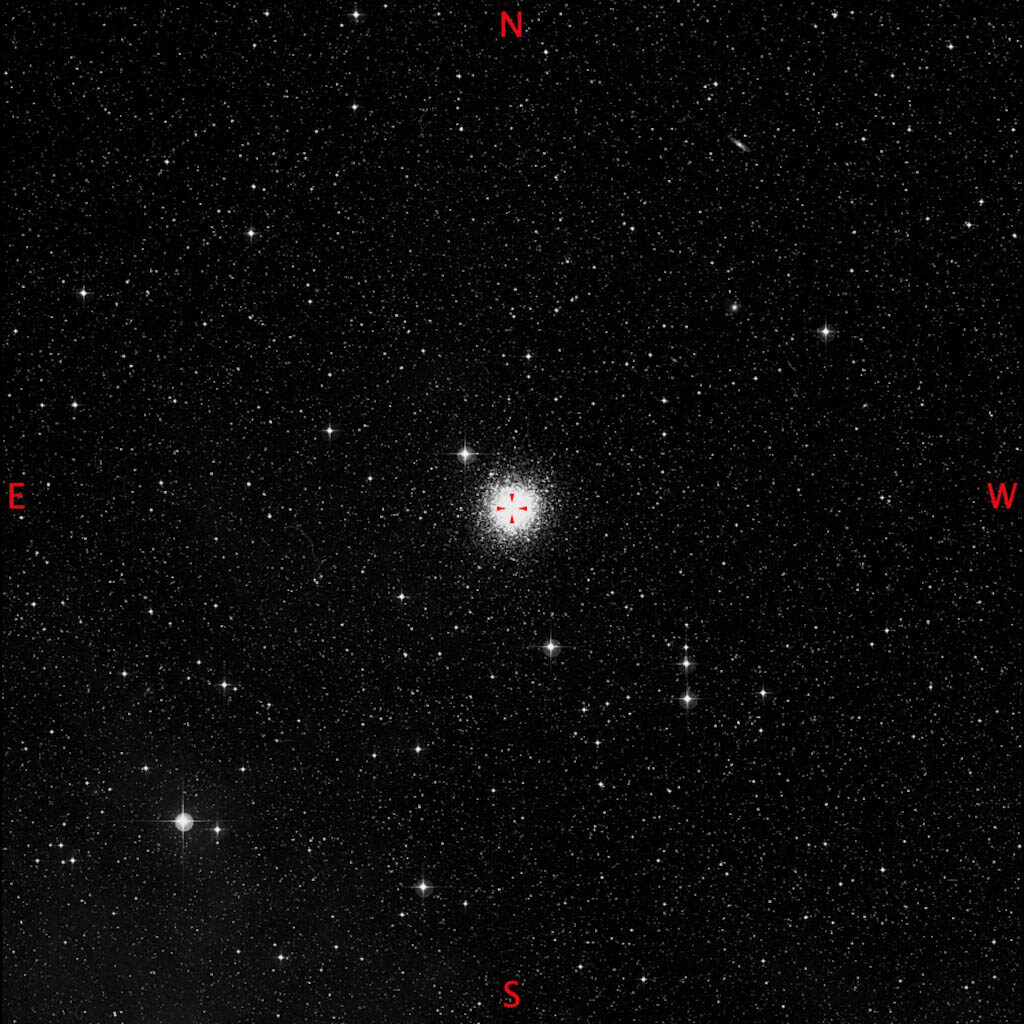
North is at the 7 o’clock. In the Altair Astro 250mm, Plossl 40mm, 51 X, 50.8′ I see three prominent stars. Above the cluster are two stars running left/right, these are, to the left ID/s: GSC6793-00501 and to the Right ID/s: GSC6793-00381 A third star ID/s: GSC6793-00311 , sits below GSC6793-00501 and the three stars form an inverted Right Angle triangle. M80 sits on the hypotenuse about a thrid the distance from GSC6793-00311 and GSC6793-00381.
Using the Altair Astro 250mm, Delos 14mm, 145 X, 29.8′ the core is quite bright and generally unresolved with direct vision. With averted vision some become resolved, but they are minute. In the Altair Astro 250mm, Delos 10mm., 203 X, 21.3′, the outer edges around the core form a fading ring of stars. The core now looks asymmetric with a flatness or maybe darker area at the the 3 o’clock. The brighter core area is definitely offset to the 9 o’clock. The cluster is small, taking up about 10% of the FOV in the Altair Astro 250mm, Delos 10mm., 203 X, 21.3′
M4
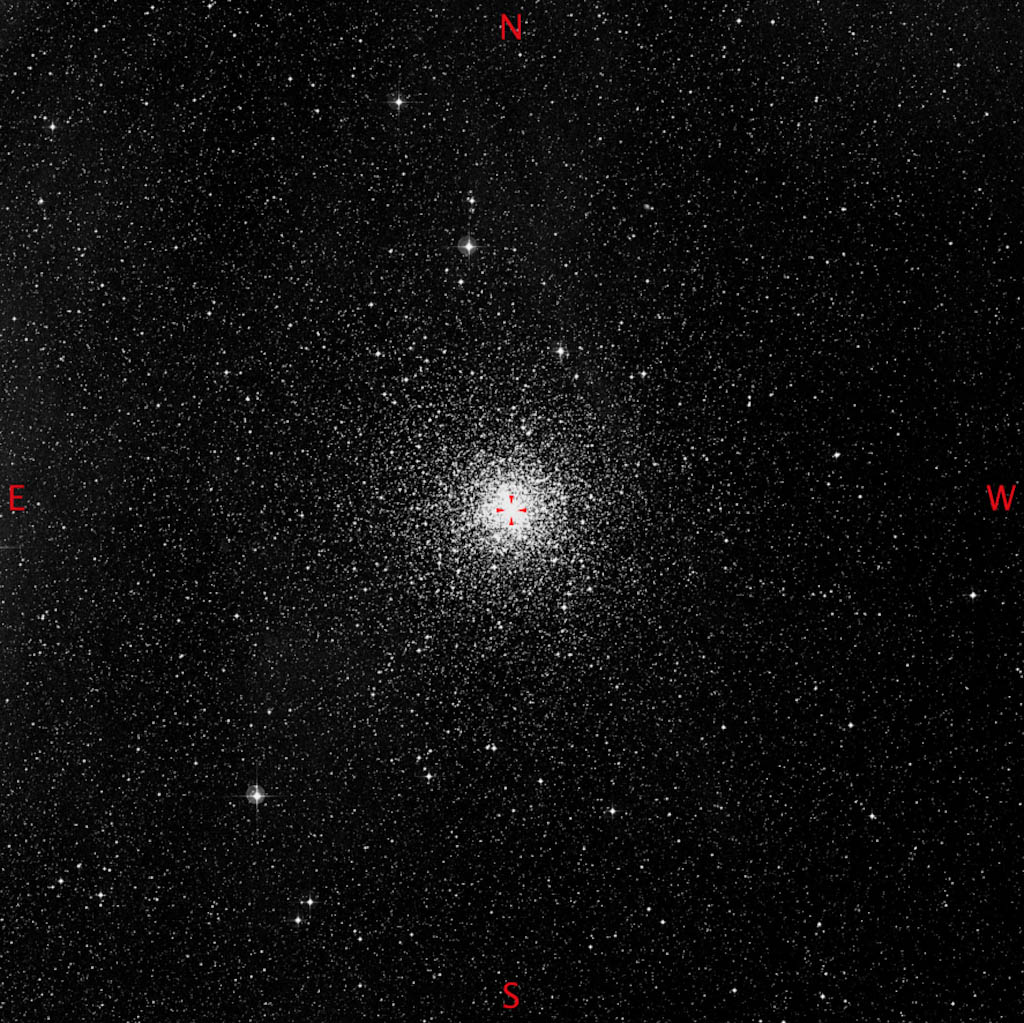
Another big Globular cluster at 35′ in diameter. But in the Altair Astro 250mm, Plossl 40mm, 51 X, 50.8′ it is certainly not circular and looks like an loose Globular Cluster, or an tight Open Cluster with nebulosity at the centre and overall, it’s very elongated being wider at the top 1 o’clock position and narrowing down towards the 7 o’clock position. A sort of ‘Y’ or Stag head shape all formed by lines of stars. In the Altair Astro 250mm, Delos 14mm, 145 X, 29.8′ there is that definite 1 to 7 o’clock orientation, but to the right of the bottom part of the ‘Y is a grouping of 4 stars running parallel to 5 stars at the centre, forming a nebulous line like tramlines. In the TMB 80 f/6, Plossl 26mm, 18 X, 2.7° you don’t see any of this finer detail at all.
M7
Unable to see this with the big scope as the trees are in the way. Through the TMB 80 f/6, Plossl 26mm, 18 X, 2.7°, what stands out is a very regular ‘X’ shape of stars. North is at the 5 o’clock. The ‘X’ is oriented with one a line of the ‘X’ aligned 2 to 7 o’clock with the cluster weighted to the West . On closer examination the ‘X’ structure looks a little more like a stick man jumping in the air with his arms and legs spread a 45 degrees to the vertical plane.
M16
North is to the 4 o’clock. In the TMB 80 f/6, Plossl 26mm, 18 X, 2.7° the cluster looks like the figure ‘8’ but with the top and bottom parts of each loop missing, so a little more like two ‘U”s with their bases back to back. To the top and West, there are two stars ID/s: HD168076 and HD168076 side by side and close together. This forms one side of the top ‘U’ . Around this area, is what initially looks like unresolved faint stars or nebulosity.
Now looking through the Altair Astro 250mm, Delos 14mm, 145 X, 29.8′ that fuzzy unresolved faint star/nebulous area looks more like nebulosity now. Switching to the Altair Astro 250mm, Delos 10mm., 203 X, 21.3′ and you can now see this a definitely nebulous. To the right of those two closely spaced stars, are a grouping of 5 larger stars that now enhance that ‘U’ shape. The nebulosity runs from this area down to the 8 o’clock SEE and opens up and surrounds two other bright stars that form the other end of that back to back ‘U” shape.
M20/M21
Second time this evening for this one. With the TMB 80 f/6, Plossl 26mm, 18 X, 2.7° all connected this looks rather nice. With North at the 4 o’clock there is a double line of stars running 12 to 6 o’clock. At each end of these two lines are two clusters. The top cluster is surrounded by obvious nebulosity, with the bottom cluster surrounded also, but it’s not quite so easy to see. The bottom cluster turns out to be M21 – so two for the price of one.
Looking through the Altair Astro 250mm, Delos 14mm, 145 X, 29.8′ it just looks too much in that I’m seeing much less.
Getting really tired now, so having difficulty concentrating, so this was as far as I got.
Another belter of a session. Conditions were ideal even if the low altitude of the targets chosen was not. Looking through the various observing guides for all these objects afterwards, I was struck by how well some of my observations matched the guides. M71 in particular matched Steve O’Meara’s observations in shape and one void area – where he saw three. M20 on the other hand though, was disappointing. I’m finding that tracking nebulosity really hard work, where it seems that well over half of what you eventually end up seeing, can only be eaked out with averted vision. I guess that I’ve not done much serious observing of these kind of structure or galaxies and that more practice is going to be needed.
The other thing that struck me at the time was the huge size differences in the five Globulars I observed. Here they all are – reproduced at the same FOV.
Lessons learned from this session – Get out there and do M20 again.